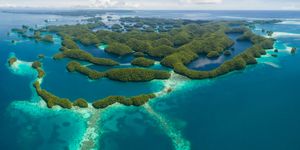Genetic Risk Factor for Erectile Dysfunction is Discovered
Scientists have discovered a gene that is connected to erectile dysfunction for the first time. This work may help improve therapeutics for the problem, which commonly impacts middle-aged and elderly men. Current treatments aren’t helpful in many cases. The work, which identified the region or locus around the SIM1 gene as a potential cause, has been reported in the Proceedings of the National Academy of Sciences (PNAS) and is outlined in the video.
"Identifying this SIM1 locus as a risk factor for erectile dysfunction is a big deal because it provides the long sought-after proof that there is a genetic component to the disease," said the study's lead author, Eric Jorgenson, Ph.D., a research scientist at Kaiser Permanente Northern California's Division of Research. "Identifying the first genetic risk factor for erectile dysfunction is an exciting discovery because it opens the door for investigations into new, genetic-based therapies."
Erectile dysfunction could be caused by hormonal, neurological or vascular changes. It’s been suggested that genes are a factor in around a third of cases. Ruling out risk factors like body mass index, this work showed that changes in the SIM1 locus are linked to erectile dysfunction. The researchers also connected the locus to the regulation of sexual function.
Large databases made this work possible. One contained data from 36,648 men that were part of the Genetic Epidemiology Research on Adult Health and Aging (GERA) cohort, which is affiliated with the Kaiser Permanente Research Bank. The findings from this dataset were then compared to information from 222,358 men in the U.K. Biobank.
Variations in the genetic sequence of the SIM1 locus increased the risk of erectile dysfunction by 26 percent.
"This significant advance in our understanding of erectile dysfunction is made possible by the unique ability of the Kaiser Permanente Research Bank to link detailed questionnaires, electronic health records, and genetic data on such a large population," said the study's senior author, Stephen Van Den Eeden, PhD, a research scientist at the Division of Research.
Erectile dysfunction research relies on self-reporting, which can confound the research. The scientists were able to confirm that SIM1 played a role regardless of clinical diagnosis of the disorder, self-reporting, or prescription history.
The SIM1 gene has a role in a signaling pathway that relates to body weight and sexual function. The variations that affect erectile dysfunction are not in, but are very close to that gene. This area of the genome changes how the gene is regulated; it contains a promoter and an enhancer for SIM1
A gene could be thought of as a light bulb, Jorgenson explained, and the promoter is akin to its switch, while the enhancer is like the fuse box. The erectile dysfunction risk locus shows enhancer activity and physically interacts with the SIM1 promoter, so it probably influences SIM1 gene expression. It can turn it on and off when necessary.
"The different bits of evidence that we present in this study fit together like puzzle pieces to create a picture of how the SIM1 locus can control erectile function," Jorgenson said.
SIM1 is now a potential therapeutic target. "This study points to a new research direction for erectile dysfunction that could help us identify other key genetic variants that trigger the disease and lead to investigations to better understand the precise mechanisms by which they operate," said study co-author Hunter Wessells, MD, chair of urology at the University of Washington School of Medicine. "Hopefully, this will translate into better treatments and, importantly, prevention approaches for the men and their partners who often suffer silently with this condition."
Sources: AAAS/Eurekalert! Via Kaiser Permanente, PNAS









